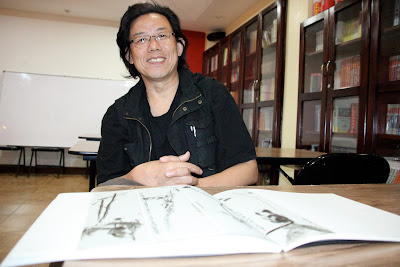Converting nature's gifts to rustic art

Creativity, it is said, is all about thinking out of the box, making the imagination soar and letting the free spirits take over. What if the proverbial box were chopped with a chainsaw? This menacing tool, which has inspired many gory, blood-oozing horror flicks, has taken a creative dimension in the hands of Gilbert Nicely and his daughter, Casie Nicely, carving out rustic furniture from driftwood, tree stumps, and barks. "I never felt intimated by the chainsaw," said Casie Nicely, "and when Daddy gave me a chance to use it, I felt that I was in control." This tool of the trade is a legacy that was passed on from father to daughter. "I saw my dad using the chainsaw. He made bowls and baskets," Casie said. "He showed me the techniques to hold the stumps between the feet and use the chainsaw to carve." She was 16 then, and there has been no looking back since. Her father, who is 76 this year, has been in the trade for 40 years....


